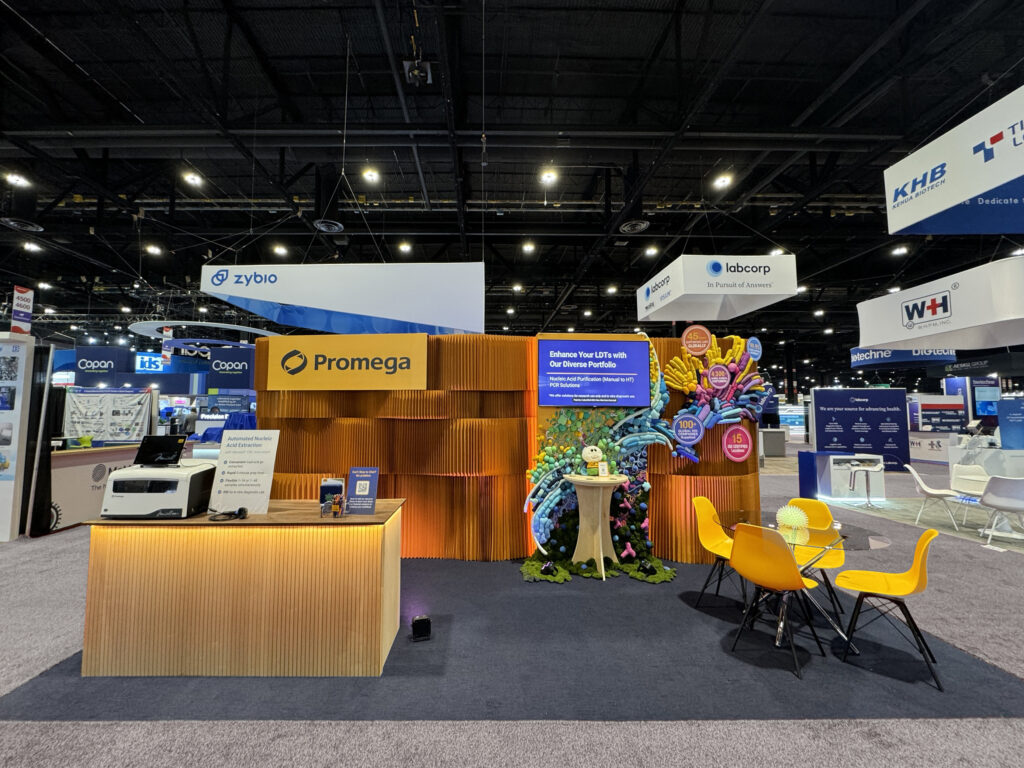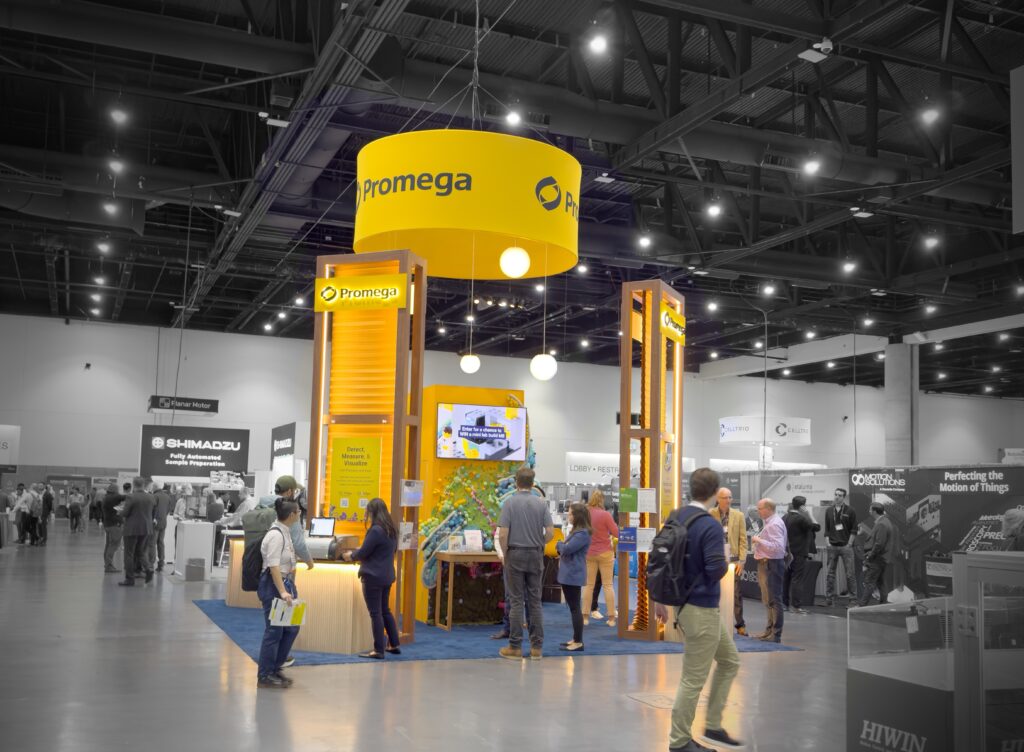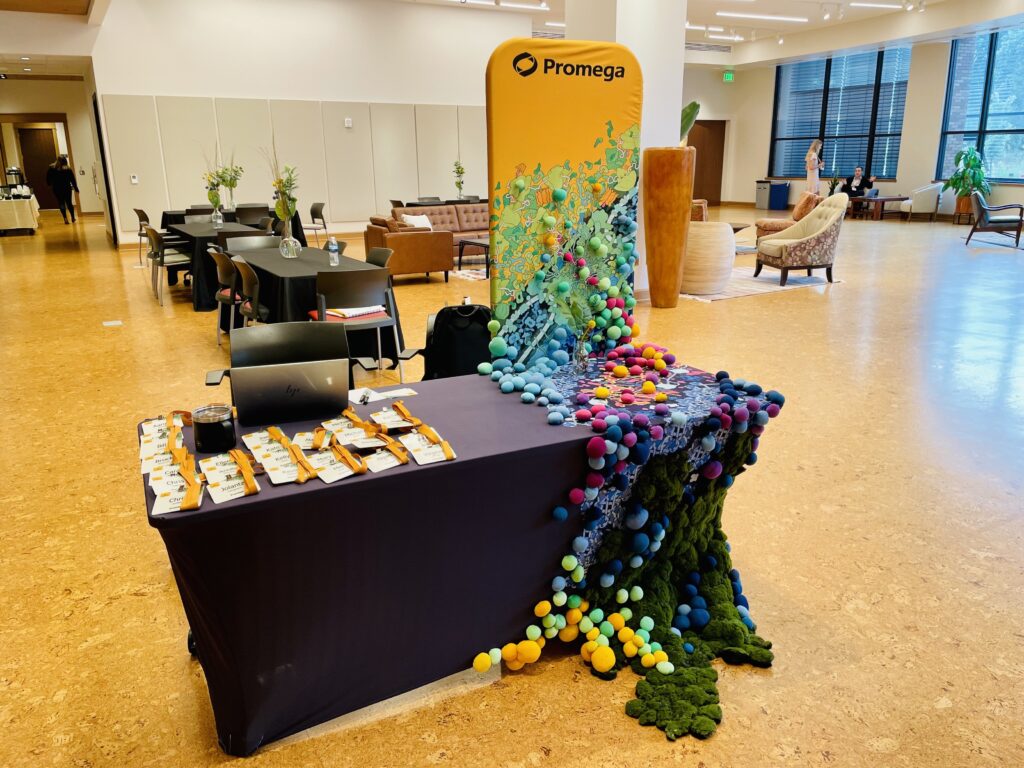Step inside a Promega booth and leave the ordinary behind. Here, science sparks creativity, sustainability is woven into every detail, and discovery isn’t just something you see—it’s something you feel.
Continue reading “Bringing Science to Life: How Art and Sustainability Shape Our New Trade Show Booth Design”Promega News and Events
The Central Dogma of Promega: The Story and Science Behind Our Kit Packaging Design
An amazing transformation is taking place, unseen and unnoticed, within the microscopic bits that make you, you.
A tightly coiled lattice unspools to reveal a sinuous DNA stand. Along its length, tendrils of RNA sprout, growing bit by genetic bit. Eventually, the signal to stop and break away arrives, yielding a new strand of RNA that faithfully transcribes the DNA strand’s genetic code. Proteins trim and splice this new growth, pruning it so it takes its final form, messenger RNA. More proteins then ferry this mRNA strand through a pore in the nuclear envelope into the open space of the cell’s cytoplasm. Ribosomes and codon-carrying tRNA alight onto the released mRNA strand, reading the instructions it has carried from the DNA in the nuclear nursery. From this trio new forms emerge, bulbous proteins shaped by their destined purpose.
And so it goes, every second of every day, in the tens of trillions of cells in your body…
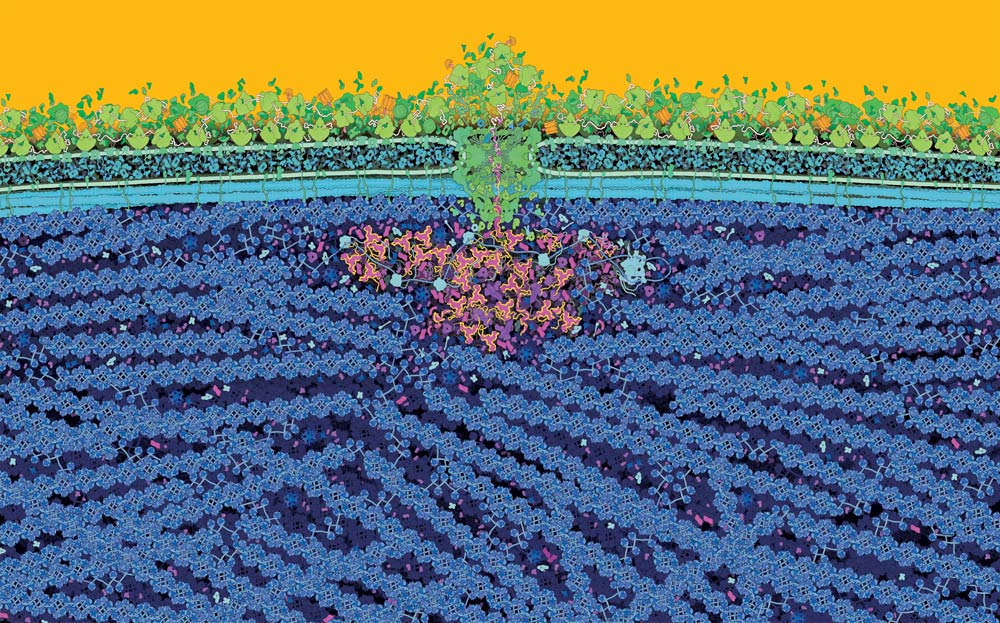
…And on the tens of thousands of kit packages we deliver to customers across the globe every year.
Continue reading “The Central Dogma of Promega: The Story and Science Behind Our Kit Packaging Design”Celebrating 10 Years of Innovation: Introducing the CSCB-Promega Innovation Fund
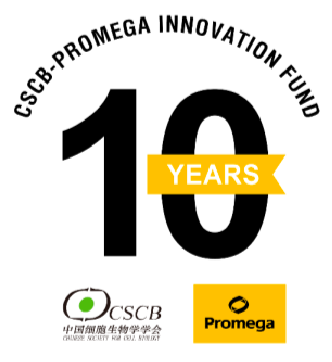
For the past decade, Promega has supported cutting-edge research through the CSCB-Promega Innovation Award. Now, as we mark 10 years of collaboration with the Chinese Society for Cell Biology (CSCB), the Award is being converted into the CSCB-Promega Innovation Fund.
The CSCB, founded in 1980, is one of the leading scientific organizations in China. Dedicated to fostering educational opportunities and innovation, the CSCB organizes conferences, publishes journals, promotes research collaborations, offers training for students and young scientists, and educates the general public on cell biology and biomedicine.
Continue reading “Celebrating 10 Years of Innovation: Introducing the CSCB-Promega Innovation Fund “Blending Art and Science in a Costa Rica Physics Lab
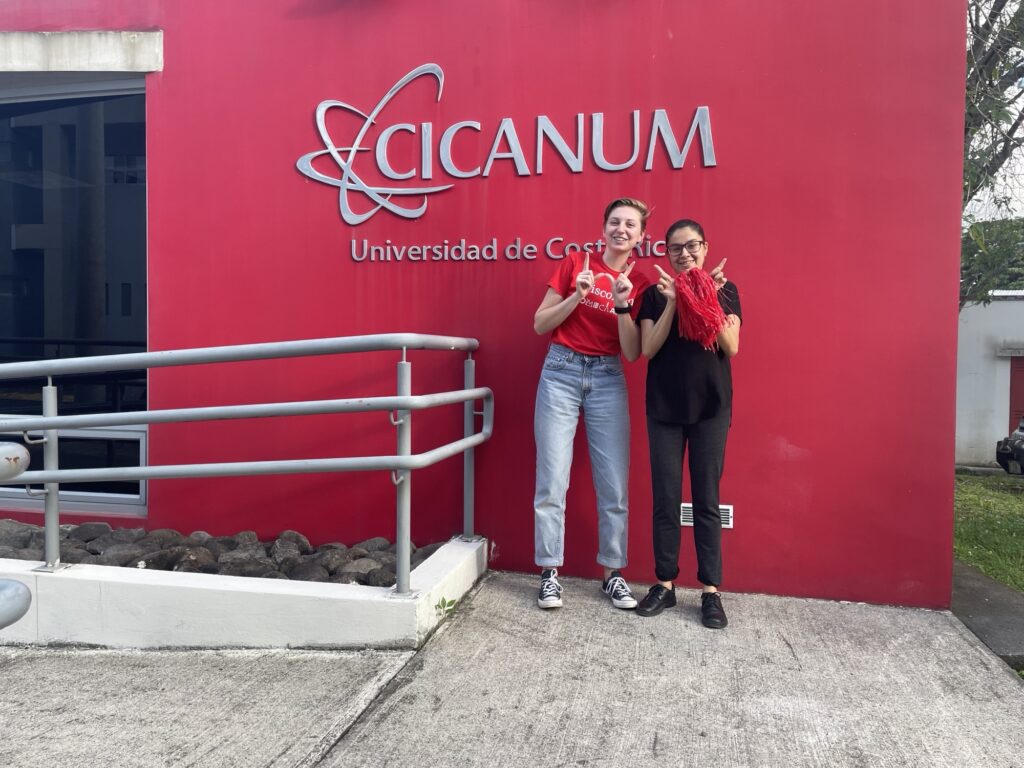
My name is Sophia Speece. I am a junior at the University of Wisconsin-Madison studying Biomedical Engineering and Music Performance. As you can imagine, there is not a lot of overlap between these two passions of mine.
This past summer I was given the unique opportunity to combine these two areas. I applied and was accepted for the “Artist in the Science Lab” internship abroad in Costa Rica!
Continue reading “Blending Art and Science in a Costa Rica Physics Lab”Insights from our Second Annual Targeted Protein Degradation Symposium
In the opening remarks of our second annual Targeted Protein Degradation Symposium, Tom Livelli, VP of Life Sciences Products & Services at Promega, posed a question to the attendees: “What do you want to be able to do today that you can’t?” This aspirational question set the tone for an event where building connections to advance the study and application of proximity-induced degradation took center stage.
More than 90 attendees from academia and industry gathered September 20–21 for the two-day symposium, which was hosted in our inspirational Kornberg Center—the R&D heart of Promega. Through engaging talks, a poster session, “Learn n’ Burn” challenges and social gatherings, participants had the opportunity to reinforce existing collaborations and to connect with others who are making an impact in the field of targeted protein degradation.
Promega Fall Art Showcase Honors Truman Lowe, Ho-Chunk Artist and Mentor
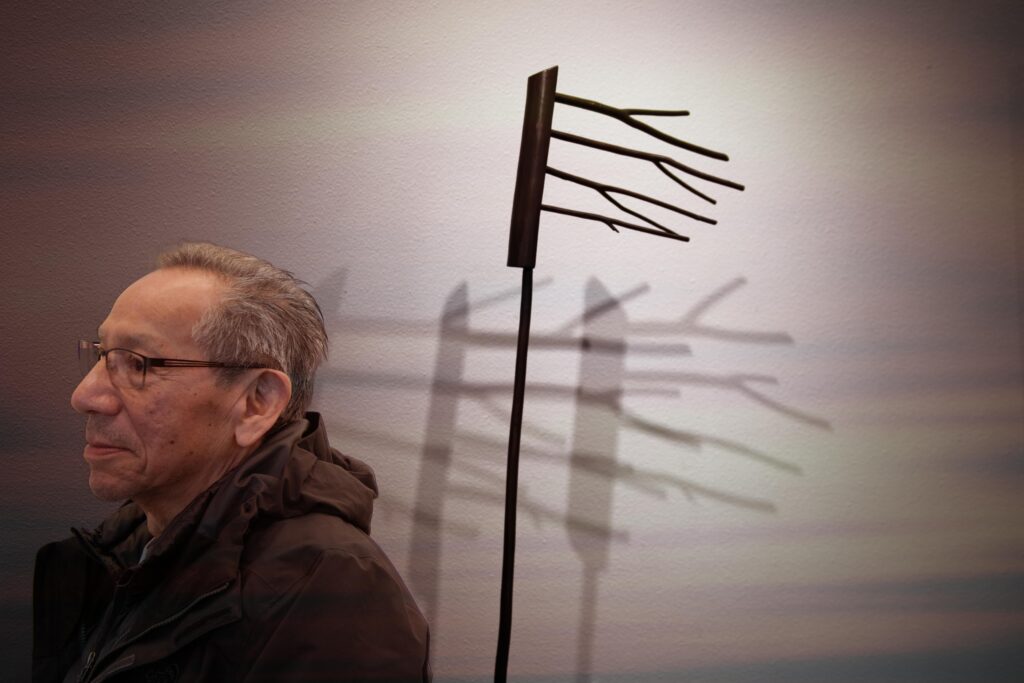
Outside the BioPharmaceutical Technology Center, the wind snakes through the tall prairie grasses, drying slowly in the crisp September air. The walking paths through the woods are turning orange with fallen leaves, and the resident sandhill cranes, a fixture of summer at Promega Madison, will soon be heading to their winter home in southern Florida.
Inside the BTC, the Promega Fall Art Showcase is honoring the life of Truman Lowe, an acclaimed Ho-Chunk artist whose sculptural works evoke a powerful connection with nature. For decades, Lowe was a professor in the Department of Art at the University of Wisconsin-Madison where he was an exceptional mentor to young artists. He was known for encouraging artists to fearlessly delve into their artistic voice and equipping them with the necessary tools to navigate the art world. The Fall Art Showcase honors his legacy by exhibiting his art alongside pieces by several former students.
Truman Lowe: Visionary Artist, Mentor and Teacher
Truman Lowe was born on the Ho-Chunk Nation of Wisconsin reservation in 1944. He recounted a childhood of drawing with rocks on the Black River and creating crafts like baskets and beadwork with his parents. Though he loved art from an early age, Lowe says that he never thought of art as a profession until he was studying for his undergraduate art degree at the University of Wisconsin-LaCrosse. There, he became fascinated with Michelangelo, who inspired him to realize that art could be “a profession as well as a passion.”1
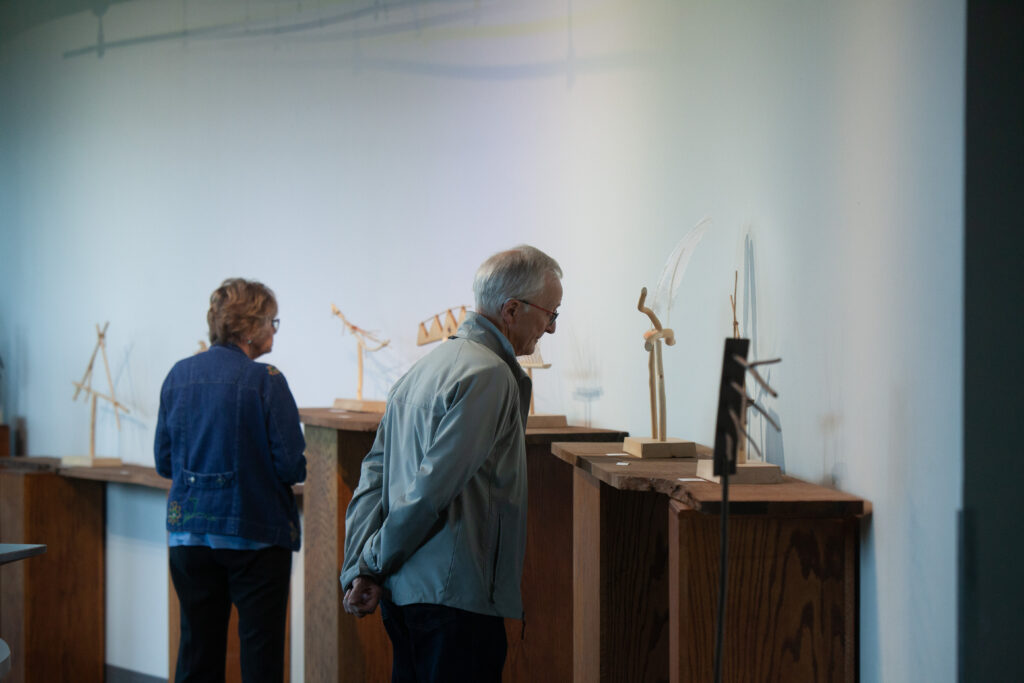
After earning a graduate degree and moving through several teaching positions at the high school and university level, Lowe accepted a position as Native American studies coordinator and assistant professor of art at UW-Madison in 1975. This began a 45-year tenure in the department of art, where he fostered a deep understanding and appreciation for Native American art and culture among his students. He also served as a curator of contemporary art at the National Museum of the American Indian.
Lowe is known for large, site-specific installations that use natural materials including wood, stone and metal. His works push creative boundaries and exhibit a unique blend of versatility, precision and emotional depth. Lowe’s sculptures have been exhibited around the world, from museums including the Metropolitan Museum of Art to embassies in Bolivia and Cameroon. A sculpture titled Effigy: Bird Form was displayed on the White House grounds during the Clinton administration and was recently reinstalled atop Observatory Hill at UW-Madison, close to the former site of Native American effigy mounds.
Lowe, who died in 2019, was a beloved mentor to many students over his long tenure at UW-Madison. A university-published obituary quotes John Hitchcock, professor and Associate Dean at UW-Madison, saying, “Truman encouraged us to stay strong as artists and to our vision as makers.” The widespread love of Lowe will be on display at the Promega Fall Art Showcase, where six of his former students will be exhibiting alongside Lowe’s own works.
Promega Fall Art Showcase
The Fall Art Showcase opened on September 19 with a symposium featuring guest speakers Patricia marroquin Norby and Jo Ortel. Norby is the Associate Curator of Native American Art at the metropolitan Museum of Art, and the first person of Indigenous descent hired for a full-time curatorial position in the museum’s 150-year history. Jo Ortel is an author, art historian and Professor Emerita of Art History of Beloit College. Ortel is also the author of a notable biography of Truman Lowe titled “Woodland Reflections: The Art of Truman Lowe.”
The Promega Culinary Team collaborated with Chef Elena Terry of the culinary organization Wild Bearies to offer traditional Ho-Chunk food at the reception. Chef Terry provided recipes and connected the team with indigenous purveyors to source ingredients. Promega also collaborated with Little Eagle Arts Foundation to include pieces of Ho-Chunk culture into the event.
The Fall Art Showcase runs through December 29 and is open to the public Monday through Friday 8:00 am – 4:00 pm at the Promega BioPharmaceutical Technology Center. For more information, visit https://www.promega-artshow.com/
1As quoted in Woodland Reflections: The Art of Truman Lowe by Jo Ortel
Read more about Promega Art Showcases:
- Creativity in Action: The Promega Employee Art Show
- A Vibrant Welcome Back to the Promega Art Showcase
Promega qPCR Grant Series #1: Marine Plant Ecologist, Dr. Agustín Moreira-Saporiti
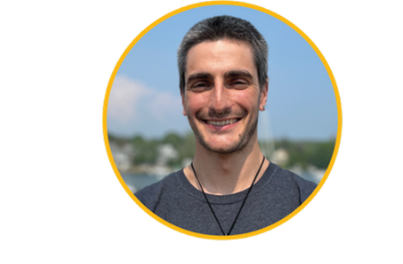
Marine seagrasses are submerged flowering plants that form essential underwater meadows, fostering diverse ecosystems and providing a habitat for marine life. Our first Promega qPCR Grant winner and marine ecologist, Dr. Agustín Moreira-Saporiti, plans to continue adding to a fascinating body of work aimed at understanding flowering in marine seagrasses.
Dr. Moreira-Saporiti began his journey into marine plant ecology at the University of Vigo, Spain, where he earned a bachelor’s degree in marine sciences. He then went on to complete a master’s degree at the University of Bremen (Germany) where his thesis focused the ecology of seagrasses in Zanzibar, Tanzania. His passion for marine botany led him down a deeper exploration of marine plants, unraveling the intricate web of ecosystem processes within seagrasses.
2023 Promega iGEM Grant Winners: Tackling Global Problems with Synthetic Biology Solutions
On June 15, 2023, we announced the winners of the 2023 Promega iGEM grant. Sixty-five teams submitted applications prior to the deadline with projects ranging from creating a biosensor to detect water pollution to solving limitations for CAR-T therapy in solid tumors. The teams are asking tough questions and providing thoughtful answers as they work to tackle global problems with synthetic biology solutions. Unfortunately, we could only award nine grants. Below are summaries of the problems this year’s Promega grant winners are addressing.
UCSC iGEM
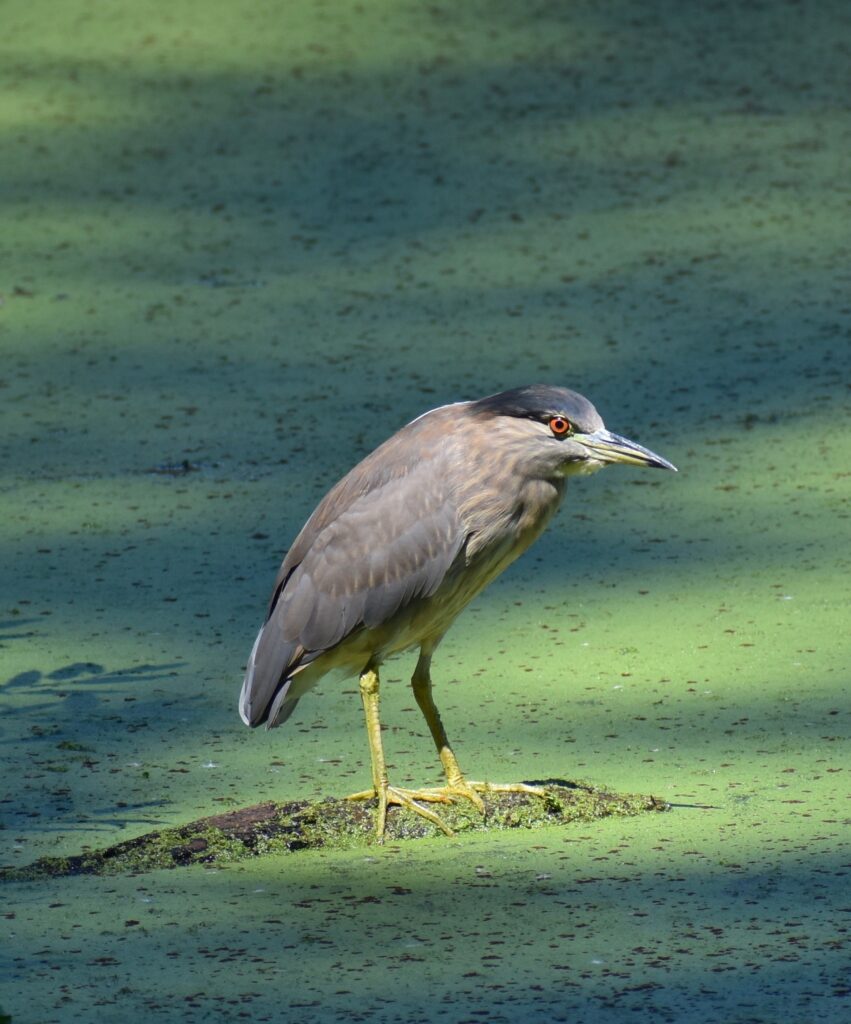
The UCSC iGEM team from the University of California–Santa Cruz is seeking a solution to mitigate the harmful algal blooms caused by Microcystis aeruginosa in Pinto Lake, which is located in the center of a disadvantaged community and is a water source for crop irrigation. By engineering an organism to produce microcystin degrading enzymes found in certain Sphingopyxis bacteria, the goal is to reduce microcystin toxin levels in the water. The project involves isolating the genes of interest, testing their efficacy in E. coli, evaluating enzyme production and product degradation, and ultimately transforming all three genes into a single organism. The approach of in-situ enzyme production offers a potential solution without introducing modified organisms into the environment, as the enzymes naturally degrade over time.
IISc-Bengaluru
Endometriosis is a condition that affects roughly 190 million (10%) women of reproductive age worldwide. Currently, there is no treatment for endometriosis except surgery and hormonal therapy, and both approaches have limitations. The IISc-Bengaluru team at the Indian Institute of Science, Bengaluru, India, received 2023 Promega iGEM grant support to investigate the inflammatory nature of endometriosis by targeting IL-8 (interleukin-8) a cytokine. Research by other groups has snow that targeting IL-8 can reduce endometriotic tissue. This team will be attempting to create an mRNA vaccine to introduce mRNA for antibody against IL-8 into affected tissue. The team is devising a new delivery mechanism using aptides to maximize the delivery of the vaccine to the affected tissues.
Continue reading “2023 Promega iGEM Grant Winners: Tackling Global Problems with Synthetic Biology Solutions”From Student Debt Assistance to Family-Forming Support: Benefits and Well-Being Go Hand in Hand
You know this, but it bears repeating. Prioritizing physical, psychological, emotional and financial wellness is key to supporting our overall well-being. This holds true during the busy holiday season and throughout the entire year.

It can also be easier said than done, so we need as much support as possible in this vital endeavor. An in-depth framework recently published by the US Surgeon General outlines a vision of the workplace as an engine of well-being. The report states, “Our workplaces play a significant role in our lives. Work affects both our physical and mental well-being – in good ways and bad. The COVID-19 pandemic brought the relationship between work and well-being into clearer focus.”
Continue reading “From Student Debt Assistance to Family-Forming Support: Benefits and Well-Being Go Hand in Hand “The 33rd International Symposium on Human Identification: The Past, Present and Future of Investigative Genetic Genealogy
It’s hard to imagine a better way to celebrate the 33rd International Symposium of Human Identification than a night spent wandering through the Hall of Human Evolution at the Smithsonian Museum of Natural History. The meeting, which took place in Washington D.C. from October 31–November 4, focused largely on using investigative genetic genealogy (IGG). When used to identify human remains or solve cold cases, IGG (a.k.a. forensic genetic genealogy or forensic investigative genetic genealogy, take your pick) relies heavily on techniques developed to sequence DNA from ancient human remains.
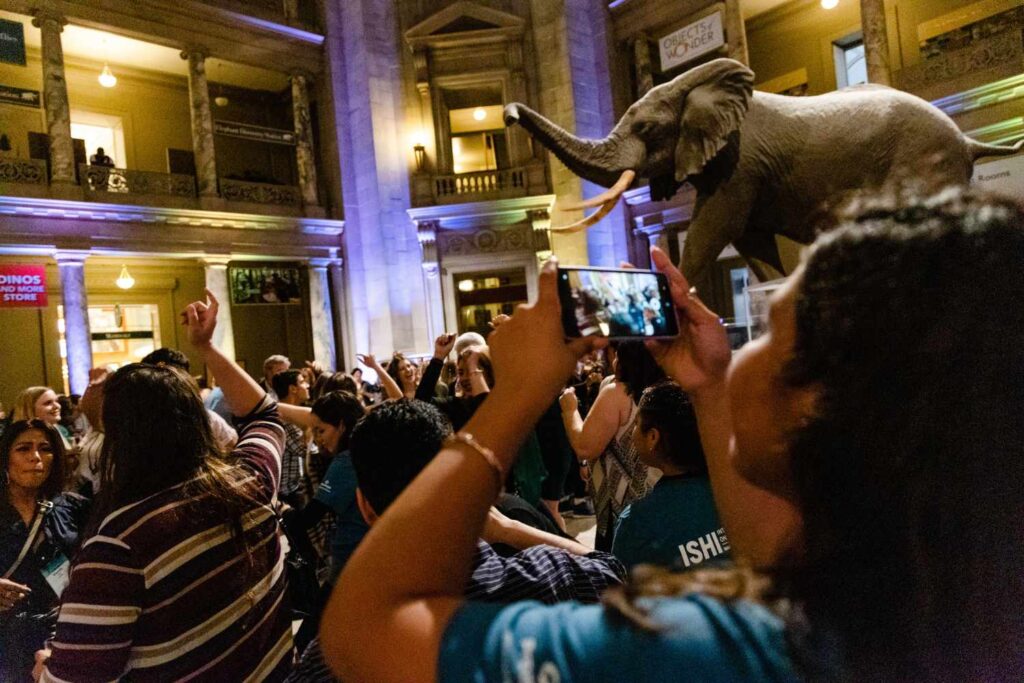
New to ISHI this year were live-streamed presentations, building off the success of last year’s session recordings for online streaming. Another first was attendees dressing up in costume for the welcome reception, which happened to coincide with Halloween. From a nucleic acid-themed group costume to Sims characters to a bunch of grapes, ISHI 33 attendees had a chance to show off their fun side while reconnecting with colleagues.
While a range of topics were covered during the workshops, sessions and poster presentations, three themes stood out to this first-time ISHI attendee. In addition to IGG, there was widespread interest in developments in DNA databases as well as efforts to mobilize DNA analysis labs.
Continue reading “The 33rd International Symposium on Human Identification: The Past, Present and Future of Investigative Genetic Genealogy”